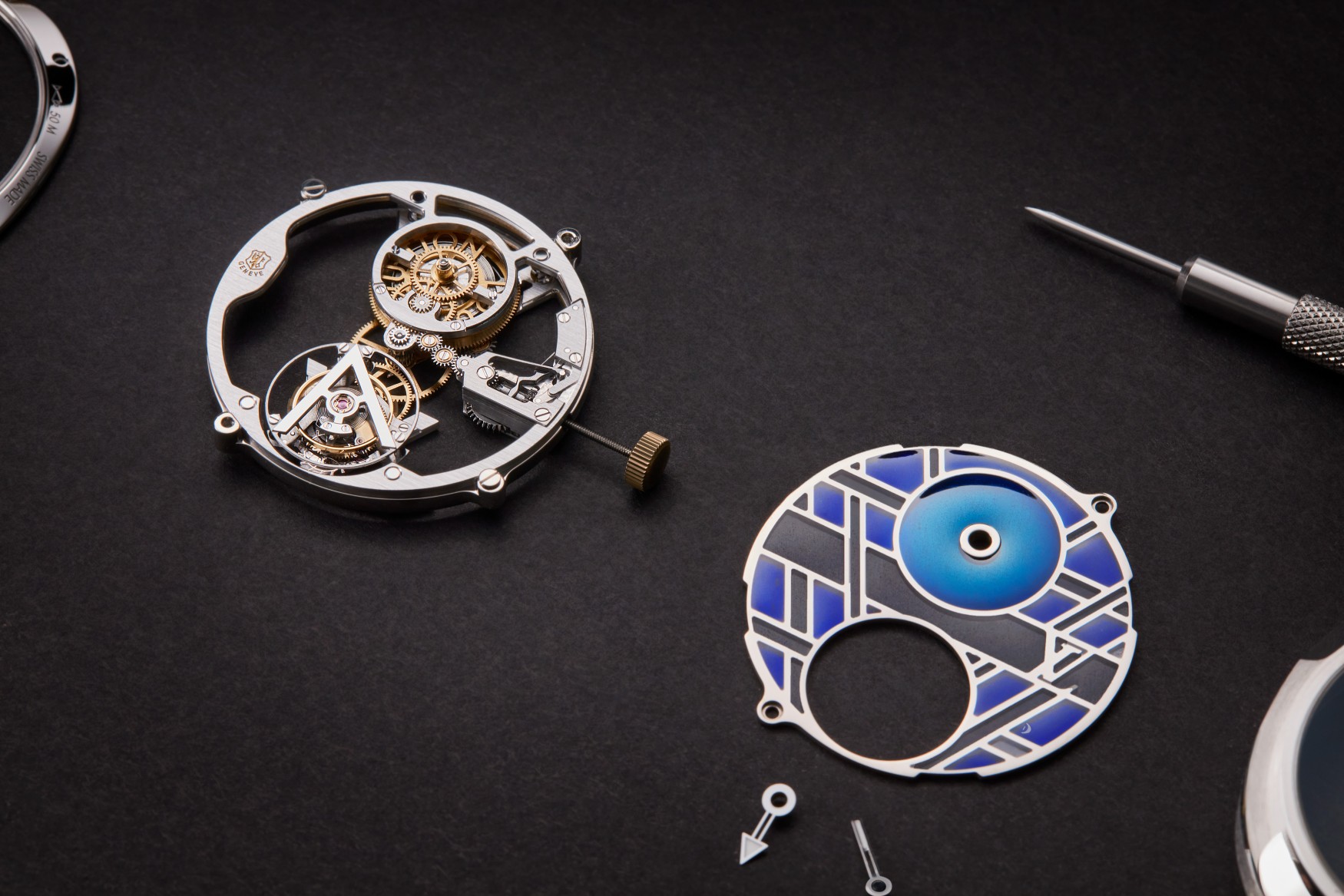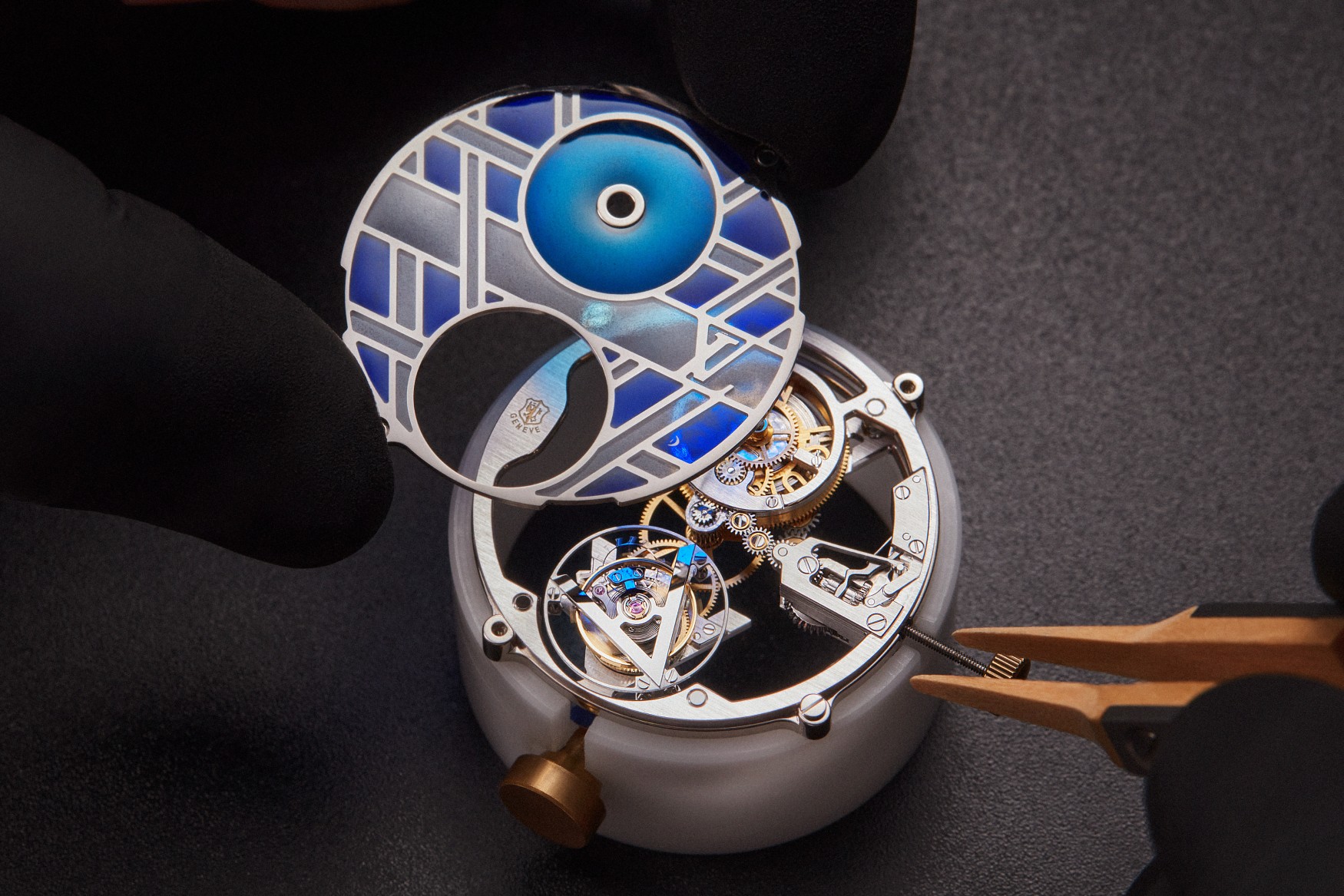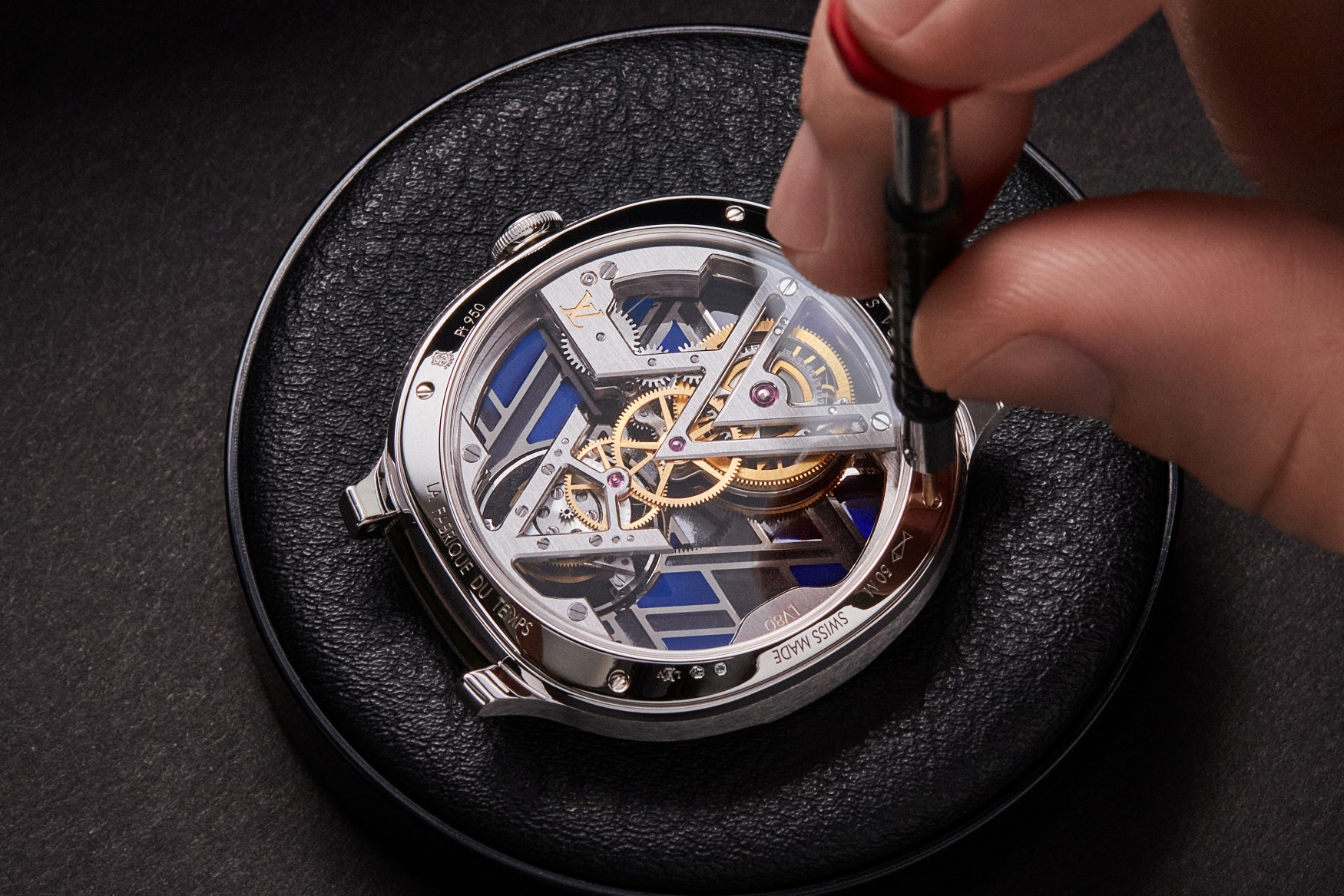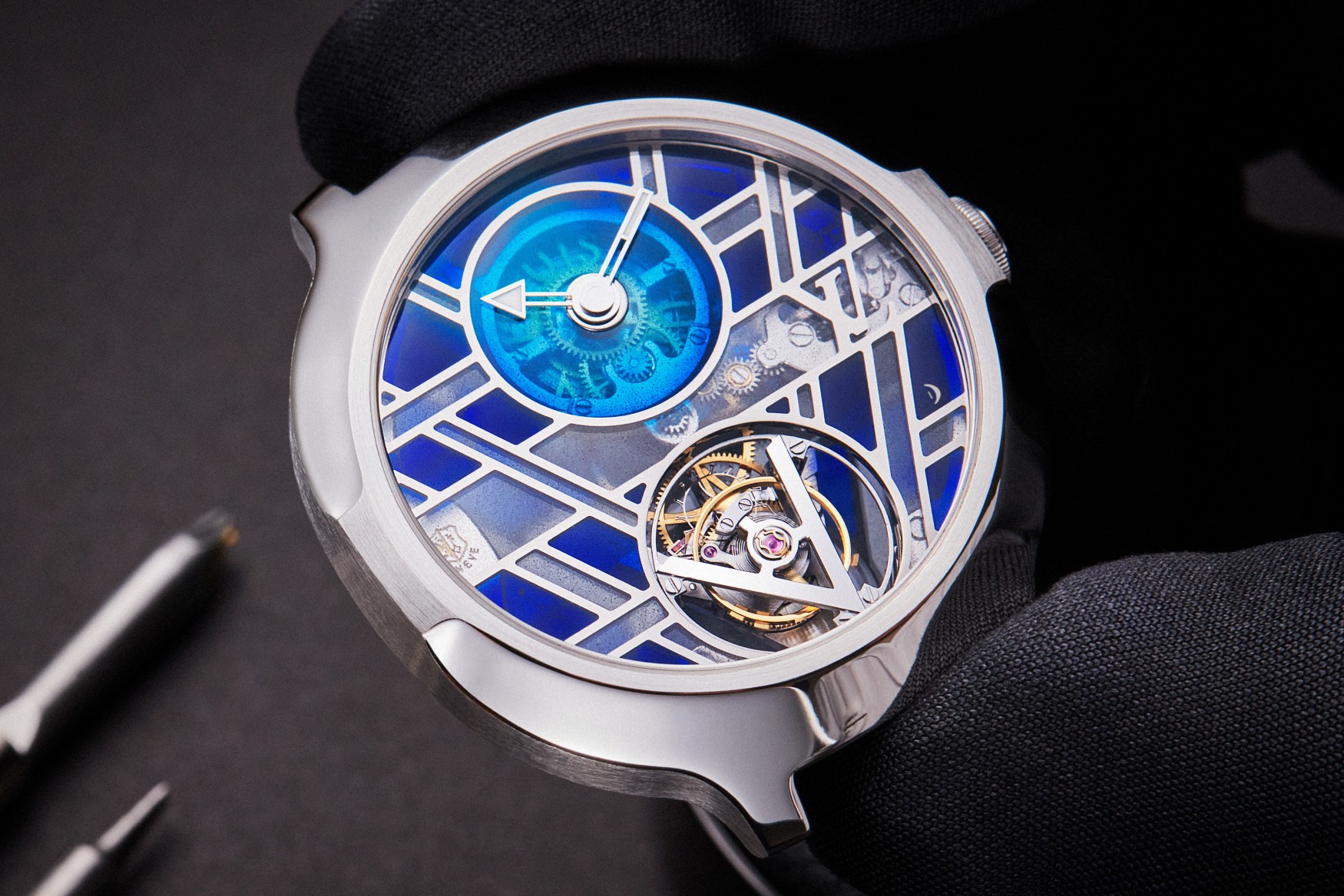Michel Navas talks Louis Vuitton Voyager Plique-à-jour, and reviving a millennium-old enamelling technique
Borna BošnjakWhen trying to establish a reputable watchmaking house, you can do so slowly, by testing the grounds and seeing exactly what sticks, and then continue to refine that recipe. Or, you can go guns blazing on all fronts, kind of like Louis Vuitton in the last few years. Granted, it’s not always been the case to have such a frenzy of different releases, but with La Fabrique du Temps fully operational, the baseline established with the new Tambour, and recognition of up-and-coming makers underway, now is the time for the different artisan departments to really show their skills. We’ve seen plenty of examples of mechanical mastery, be it tourbillons, automata, or automata with tourbillons, but it’s the enamelling workshops that have stepped up to create the long-windedly named Louis Vuitton Voyager Flying Tourbillon Poinçon de Genève Plique-à-jour. For an overview of other métiers d’art created in the LFT workshops, check out the video below where Andrew chats to legendary watchmaker Michel Navas and takes a tour of the brand’s latest offerings. For an in-depth overview of the new Voyager, read on.
Its lengthy name aside, the Voyager Plique-à-jour, as I shall refer to it from now on, makes use of likely the most complex enamelling technique around, but doing so with what I’m comfortable calling the LV twist. Enamel has always had that air of refined classicism, and you’d expect it on a dial of a time-only watch with Breguet hands and numerals. Louis Vuitton’s usage is quite different, as the brand applies it in totally avant-garde fashion.
I’m sure you would’ve come across several enamelling techniques if you delve a little deeper into high-end watchmaking. Grand feu, cloisonné, maybe grisaille – but how about plique-à-jour? It’s similar to cloisonné, where the artisan will create a lattice shaped in precious metal, before filling it with enamel powder. Except with plique-à-jour, there is no backing material on which the enamel rests, as it lays suspended, allowing light to pass through.
Impressively, the white-gold lattice dials and their capillary action-painted enamel pockets were done in-house by La Fabrique du Temps, which is testament to the recruiting Louis Vuitton has done for its watchmaking division. Certainly the most impressive display of skill is the execution of the round sub-dial at 12 o’clock, and its central “hand pipe”, as LV call it. To attach the hour and minute hands, the brand needed to find a solution for passing the pinion through the dial, choosing pretty much the most complicated way to do it. You’ll notice that the small ring isn’t connected to the rest of the gold framework, as it’s actually held in place only by the three-colour gradient enamel that surrounds it. I don’t even want to know how steady your hands have to be for this kind of precision work, but the 100 hours of work that Louis Vuitton quotes per dial suggests it’s a difficult task for even the best craftspeople.
Beneath, Louis Vuitton rely on an annular bridge with as little surface area as possible to hold the movement components, as not obstruct the light passing through the enamel gradient. It may look like skeletonisation at first, but in this instance, the movement was engineered this way, rather than having an artisan file away “unnecessary” bits of metal.
So, let’s talk more about this movement. The LV104 is all about being as airy as possible, and is fully committed to the bit – so it could only be a flying tourbillon. Without an upper bridge obstructing the 60-second rotation of the carriage, it’s free to continue the “V” theme this entire watch is dedicated to. To swiftly touch on the specifications before delving into the details, the LV104 consists of 168 components, has an 80-hour power reserve, and beats at 21,600 vibrations per hour.
Turn the watch around, and the LV104’s clever layout becomes all the more apparent. It does a great job of hiding away the less glamorous, so to speak, parts of the movement, like the keyless works, while putting the V-shaped bridges holding the skeletonised components centrally. There are two touches here that stood out for me. The first is the size of the movement components, reducing in diameter as your eye descends from the barrel, down the gear train, and finishing at the tourbillon, following the direction of the arrow-like Vs – it’s a really neat effect. The second is the finishing. Rather than going for a uniform look, the movement’s wide anglage is rounded off on most points, save for the tips and corners of the V bridges, emphasising their sharpness and presence. It’s no surprise to see the movement branded with the Poinçon de Genève, proudly displaying it on the caseback and through the enamel on the dial side.
Though its finishing is by no means an afterthought, the platinum and white gold case of the Voyager Plique-à-jour is certainly reserved for a supporting role. It embodies Louis Vuitton’s idea of a circle in a square, not an uncommon watch design inspiration, measuring in at 41mm in diameter and 11.68mm in height. This is quite large considering there isn’t a host of complications to cram into the case, but that’s kind of besides the point. Had Louis Vuitton crammed the LV104 into a much smaller case, it wouldn’t have the ethereal quality it does, and neither would the plique-à-jour dial.
There’s a monocle-shaped, brushed ring surrounding the sapphire crystal, connected to the horizontally brushed, flat sides at 3 and 9 o’clock. The rest of the case is mirror-polished, resulting in a fluid, highly reflective surface. The dinky lugs only slightly jut out, holding a fitted, cerulean blue leather strap mounted on a platinum folding buckle.
Louis Vuitton Voyager Flying Tourbillon Poinçon de Genève Plique-à-jour pricing and availability
The Louis Vuitton Voyager Flying Tourbillon Poinçon de Genève Plique-à-jour is available now. Price is on request.
| Brand | Louis Vuitton |
| Model | Voyager Flying Tourbillon Poinçon de Genève Plique-à-jour |
| Reference | Q7EBBY |
| Case Dimensions | 41mm (D) x 11.68mm (T) |
| Case Material | 950 platinum and 18k white gold |
| Water Resistance | 50 metres |
| Crystal(s) | Sapphire front and caseback |
| Dial | Blue gradient plique-à-jour enamel |
| Lug Width | Integrated |
| Bracelet | Blue calfskin, 950 platinum folding buckle |
| Movement | LV104, manual winding, Poinçon de Genève |
| Power Reserve | 80 hours |
| Functions | Hours, minutes, flying tourbillon |
| Availability | Now |
| Price | POA |









